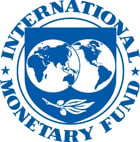
Typical street scene in Santa Ana, El Salvador. (Photo: iStock)
IMF Survey: Asia: Brighter Prospects, But At Risk from Fragile Global Economy
April 21, 2012
- Economic activity in Asia expected to gain momentum this year
- Policy flexibility needed to support stable, noninflationary growth
- China: key challenge of catalyzing consumption
Economic activity in Asia has picked up in 2012 following last year’s slowdown, but the region’s prospects are being dimmed by the fragile global economy, says the head of the Asia and Pacific Department of the IMF.

Teeming night market in Beijing, China. Emerging Asia, including China, will remain the fastest growing region in the world (photo: John Hicks/Corbis)
ASIA ECONOMIC OUTLOOK
Speaking at the IMF-Bank Spring Meetings, Anoop Singh said Asia’s economy is expected to grow at 6 percent this year—roughly the same as in 2011—before gradually recovering to about 6½ percent in 2013.
But the fragile state of the world economy continues to pose challenges for the region, in particular, the debt crisis in the euro area, the risks that could push energy prices sharply higher, and the volatility of capital flows.
“Strong economic and policy fundamentals have helped buffer the region’s economies against spillovers from the euro area, but a further sharp fall in exports to advanced economies and capital outflows would severely impact Asia both directly, and through knock-on effects on domestic demand,” said Anoop Singh.
Large Asian economies lead the recovery
In recent months, emerging Asia has been the fastest growing region in the world, led by China and India.
China’s growth is forecast to moderate, to about 8¼ percent in 2012 as the country pursues more balanced growth and the authorities aim to engineer a soft landing. The economy is likely to gather momentum in the second half of this year and 2013, reaching growth rates of 8 ¾ percent in 2013.
Inflation in Asia is also expected to decline modestly in 2012 to around 3½ percent, partly in response to an easing of food and commodity prices.
“Inflation is declining in many countries, but it remains close to, and even above, some explicit and implicit target ranges,” said Singh “and therefore there is a need to be concerned as overheating pressures can again build up.”
Flexible policy response needed
Singh said that the most immediate policy challenge was to calibrate the right amount of support for stable, noninflationary growth, weighing inflationary pressures against the risks to growth from the external environment.
“Policymakers should be ready to shift gears and be prepared to renew their tightening cycle if overheating pressures become evident,” said Singh, adding that the balance of risks differs from country to country.
He added that fiscal consolidation should also be adjusted to country-specific circumstances with a more rapid pace adopted in countries with large, cyclically adjusted deficits and elevated debt profiles.
Toward more sustained rebalancing
Singh also welcomed the recent decline in the region’s external surpluses, but he said more sustained efforts were needed to strengthen and sustain domestic sources of growth across the region, which he described as “the best form of insurance against the risk of external shocks.”
For China, Singh noted that “official statistics do not yet indicate that consumption is rising as a share of gross domestic product, something that we believe would be needed for a sustained rebalancing of the economy”.
But, he was encouraged that policies to increase household income and consumption were prominently featured in the country’s 12th Five Year Plan and there was a strong commitment by the government to achieving these objectives.


